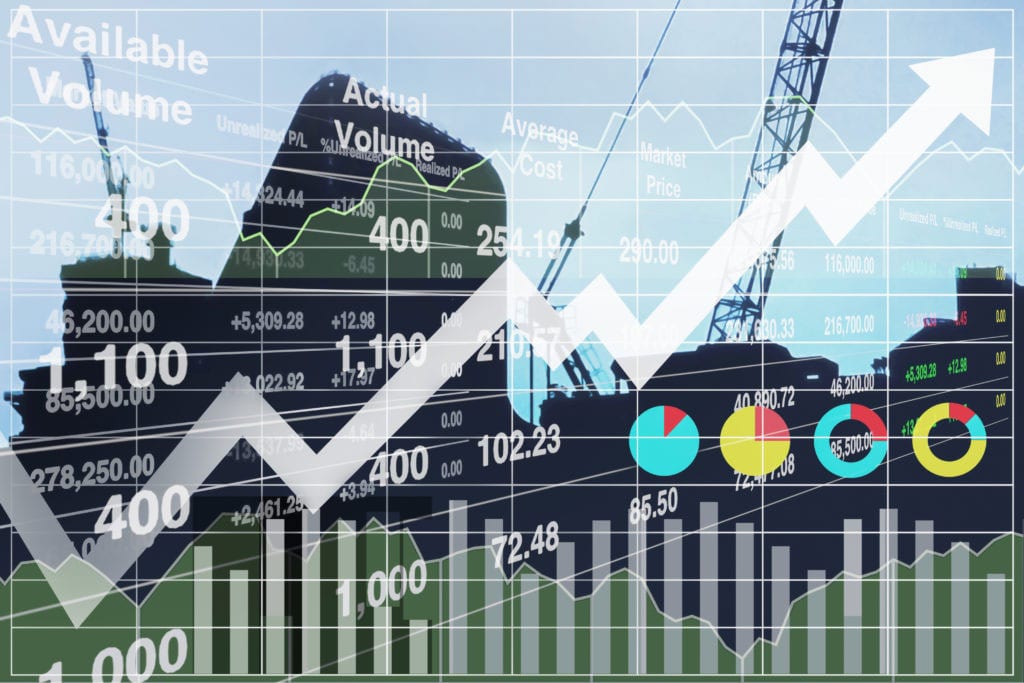
It’s fair to say that forecasting is the most critical aspect of running a construction project. Without accurate forecasting, projects can go over time and over budget rapidly, costing the construction firm a lot of money and potentially impacting their reputation with current and future customers. This is where using video for construction forecasting comes in.
Predicting what will happen on the jobsite throughout the many phases of a large, complex construction project is challenging, to say the least. Many things can happen over the course of the project — weather delays, late deliveries and labor shortages are common and can wreak havoc on best-laid plans.
The Challenges of Accurate Forecasting
Forecasting often requires contractors to be fortune tellers; they must anticipate anything and everything that could cause a budget issue. For example, unforeseen jobsite theft or equipment damage can lead to additional capital expenses that throw off the budget and impact cash flow. This can hamper the ability to purchase supplies, run payroll or pay subcontractors. Cash flow issues are a huge problem — one in five construction companies say so.
Another challenge with forecasting is resource management. Say a huge storm rolls into town during construction, and half the crew finds other work. Now the project manager is tasked with finding new staff — which may be difficult given the ongoing labor shortage in the industry. If not enough labor is available to resume work once the storm passes, productivity suffers and the project can be delayed further.
Additional forecasting problems occur when deliveries are late or materials are unavailable when needed. Project delays result if work is done incorrectly and must be redone before other project phases can commence.
These problems can be mitigated by better communication and visibility among crews, project managers and stakeholders — but unfortunately, visibility is often lacking on the jobsite. According to TrackVia, 78% of executives and 89% of managers said data coming from their jobsites was important to their success, with the most critical jobsite data being quality of work, the cost of time and materials, and safety.
Why is Visibility Lacking?
Historically, jobsite management and documentation has been done manually, with pen and paper. Workers and project managers could take photos to store and share for later review. But photos only capture a moment in time and offer no real-time insight into current jobsite conditions.
Additionally, in some instances, still photos make for poor project documentation, which can be problematic after the project is complete. With photos, it’s difficult to piece together the story of how the project was executed. Project managers have to fill in the blanks from memory and make educated guesses as to what slowed things down during a particular phase, or why other phases went smoothly or finished early. Without a clear understanding of the factors that impacted schedules and budgets, forecasting for future projects is a lot more challenging.
Use Video to Fill in the Blanks
Construction cameras that shoot video footage enable all parties involved in a construction project to get a real-time view of what’s happening on the jobsite, wherever they’re located.
Different cameras provide different features — live video streaming, recorded video footage for later review, etc. Some cameras remain in a fixed position, while others can be controlled remotely to tilt or zoom in on activity. Footage is either uploaded or streamed live to project management software, where project managers and stakeholders can see weather conditions, monitor work and deliveries, and check project status.
Having this information on-hand and readily available in real time helps with forecasting throughout the duration of a construction project in the following ways:
- Real-time insight into jobsite activity enables project managers to track daily progress and gain insight into possible delays, or see when certain parts of the project may be taking longer than expected.
- Managers gain a better understanding of how much labor is required during a particular project phase and adjust accordingly. They can anticipate when certain phases will be complete with better accuracy, and ramp up crews at the appropriate time.
- Video enables accurate documentation from start to finish, which can be reviewed and used later to forecast and plan for new projects. Managers can watch each phase sequentially and have a better understanding of what occurred during the project.
In addition to forecasting, video improves collaboration by keeping remote stakeholders informed and therefore reduces the need to travel to the jobsite. Video footage can be used as powerful content for marketing and PR purposes, and helps with investigations should there be theft on the jobsite or non-compliance with policies and procedures.
Lights (or No Lights), Camera, Action!
TrueLook’s live viewing feature enables project managers and stakeholders to see a live view of projects any time, anywhere. Permission-based access makes it easy to share visual updates with team members to keep everyone up to date. Live streaming is also available, enabling customers to view high-quality video of jobsite activity in real-time.
Learn more about TrueLook’s live viewing solutions, or check out a demo here.

